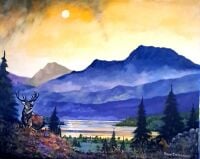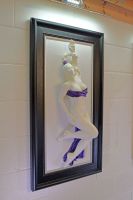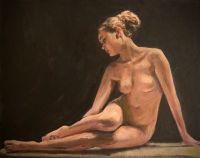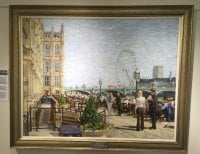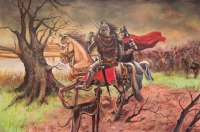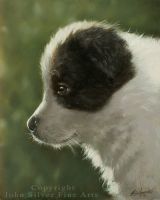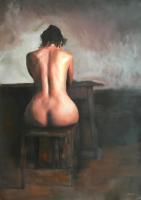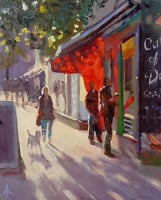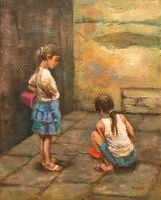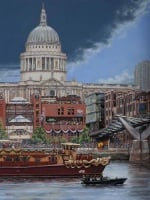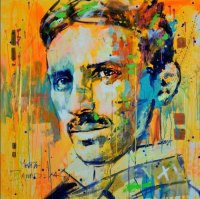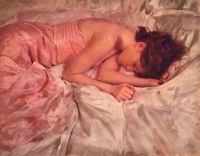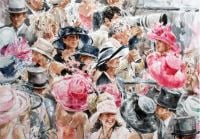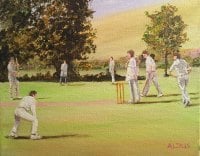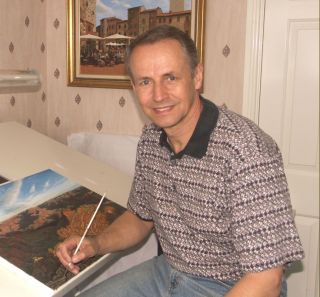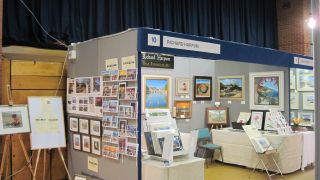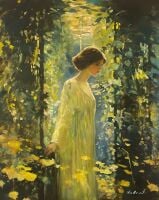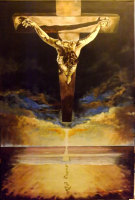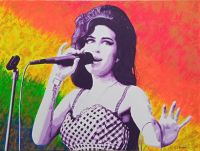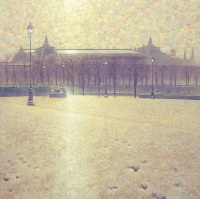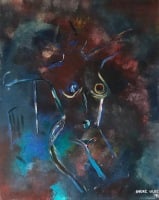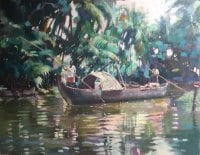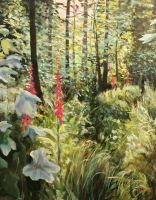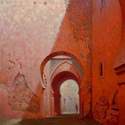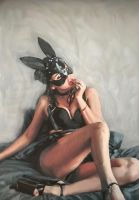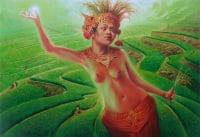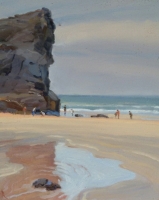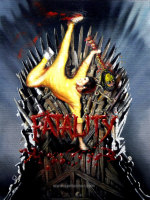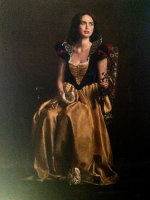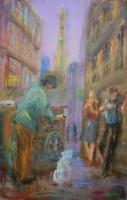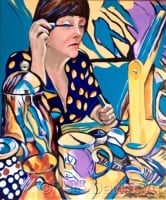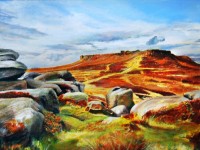Top Level > Original Paintings (6101) / Sculptures > Richard Harpum M.A (Camb)
"La Alhambra, Granada" by Richard Harpum M.A (Camb)
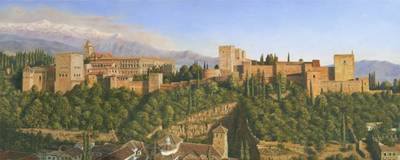
A rare opportunity to acquire an incredible original Richard Harpum M.A (Camb) painting "La Alhambra, Granada"
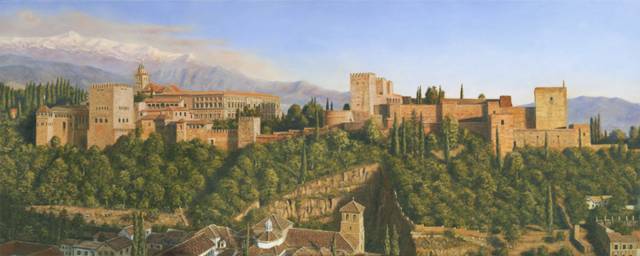
"La Alhambra, Granada" by Richard Harpum M.A (Camb)
............. BY THE INCREDIBLE AWARD WINNING ARTIST RICHARD HARPUM M.A (Camb)!!!!
Richard's work was featured in a 10-page article in International Artist Magazine, Issue 73, June 2010. He has also won a number of art competitions and awards, including Professional Artist of the Year 2012 by the (British) Society for all Artists!!!!
My wife and I are regular visitors to Andalucía in southern Spain and we often visit Grenada. In 2011 we visited the Albacín, a medieval Moorish district of the city that rises on a steep hill on the east side of the city above the Assabica valley.
While we were there, we spent a pleasant couple of hours at a lovely outdoor restaurant that offered spectactular views of the Alhambra Palace, which is perched on a small plateau south of the valley of the Rio Darro. In the distance, we could see the Sierra Nevada Mountains, the peaks of which are permenantly covered in snow. As the sun started to go down, it bathed the landscape in a luminous orange light, which I was able to capture in the painting.
Dating back to before the 11th century, the Alhambra is a UNESCO World Heritage Site and Granada's most famous monument. It consists of a fortress, the Alcazaba (to the right in this painting), with a variety of other buildings, including the Moorish Nasrid Palaces. To the left of the complex are the beautiful palace, gardens and orchards of El Generalife.
Both the Alhambra itself and El Generalife are well worth visiting but these days vistors need to make advanced bookings on the Internet.
Award-winning artist, Richard Harpum M.A (Camb), paints mainly with acrylics on canvas or board but also paints watercolour florals. He works in a realist style and pays meticulous attention to detail. His slogan is “High Definition Art”, reflecting his attention to detail.
Richard's primary areas of focus are landscapes, seascapes and cityscapes but he also paints still lifes, portraits and florals. The effective use of light is a key ingredient to all of Richard’s works and he spends a great deal of time before starting a painting in selecting a composition that provides both drama and contrast.
Born in Bromley, England, in 1951, Richard has had a passion for drawing and painting from a very young age. As a youngster, he was always drawing and became a prolific painter after he received an oil painting set for Christmas when he was 12. He has a Master of Arts degree from Cambridge University.
Measurements; 16 in x 39 in (40.6 cm x 99 cm)
Acrylic on Canvas
Investment
" An Amazing Blue Chip Investment Opportunity to Acquire an Original Richard Harpum M.A (Camb) Painting" ..
Invest in one of our paintings, rather than risky bank investments, where you can actually touch your investment. Take pleasure in looking at it and watch it appreciate in value over the years!! Remember we guarantee every painting sold is unique, original e.g only one of it's kind in the world!!!
Scarcity alone guarantees the investment !!!!
Asgard Arts offers works of art which will not only look fantastic in your home or offices (One Investment Bank in particular has purchased paintings from us for their offices see Bull paintings) but will also be a sound financial investment for the future. Art has long been regarded as a strong and safe investment. Investment in paintings was discussed recently on Bloomberg television as a sound investment as a hard asset like Gold, Platinum Silver etc. Also Ellen Kelleher a personal finance journalist for The Financial Times recently wrote an article recommending the purchase of Art, particularly in the $500 - $50,000 range as a sound long term investment with an impressive current average annual increase of 9.7 percent. Go to Latest Art news on Asgard Arts and see Hang your investments on the wall by Ellen Kelleher Published October 22 2010 in the Financial Times.

Ref only: asgard-arts
BiographyAward-winning artist, Richard Harpum, paints mainly with acrylics on canvas or board but also paints watercolour florals. He works in a realist style and pays meticulous attention to detail. His slogan is “High Definition Art”, reflecting his attention to detail.
Richard's primary areas of focus are landscapes, seascapes and cityscapes but he also paints still lifes, portraits and florals. The effective use of light is a key ingredient to all of Richard’s works and he spends a great deal of time before starting a painting in selecting a composition that provides both drama and contrast.
Born in Bromley, England, in 1951, Richard has had a passion for drawing and painting from a very young age. As a youngster, he was always drawing and became a prolific painter after he received an oil painting set for Christmas when he was 12. He has a Master of Arts degree from Cambridge University.
Richard's work was featured in a 10-page article in International Artist Magazine, Issue 73, June 2010. He has also won a number of art competitions and awards, including Professional Artist of the Year 2012 by the (British) Society for all Artists. He is a strong advocate for using the golden ratio (Phi - 1:1.618) in his paintings. You may note that the position of the sun or some other key feature or length often fits this ratio. In some of his works there are several used. Richard believes that this gives his paintings a better balance than using the more traditional "rule of thirds". During his life Richard has lived in many parts of England and currently lives in South Yorkshire. He has also travelled extensively for both pleasure and business and has lived abroad in Africa, the USA, Australia and Germany for a total of 20 years. This has given him a very broad perspective of the world, as well as providing him with wonderful sources of inspiration for his paintings.
Artist's Statement
Painting is one of my most satisfying pastimes. Although I drew and painted in oils as a youngster, a career in the British Army, followed by many years as a senior business executive, meant that painting was only a sporadic activity and I did not start pursuing my passion again in earnest until I was in my 50s. I am so glad that I did. Since a friend recommended that I try acrylics, I have never looked back; I am a very impatient person, so the fast drying time really suits me. Acrylics also give me options that are not necessarily available in other mediums. I am an engineer by training and although I love the Impressionists, I have a great deal of difficulty being “loose” in my own paintings. Having tried and failed, I decided to take the route of being a realist artist and coined “High Definition Art” as my slogan. I have become a fanatic for detail. However, I am not interested in achieving photorealism – plus I don’t have the patience for it! My time-consuming technique pretty much prohibits painting en plein air, so I use photographs and sketches for reference in my studio. Consequently, I take a camera everywhere. Although this drives my wife nuts, it means that I’m never short of things to paint. In general, I deliberately avoid painting direct copies of my photos. Indeed, I usually make lots of changes, often combining a variety of references to achieve a broader or a more interesting view. First, I will often adjust the perspective, so as to create focal points on one or more “golden ratio” (see “tactics” below). I may also change the lighting, moving shadows and illuminated areas to maximise impact. I nearly always change the sky, referring to my large library of photos. And I often add features, such as flowers, to create contrast and interest.
I have deliberately avoided the temptation to focus on a common theme. I am always exploring what is possible, so paint what I enjoy and anything that I think is interesting, be it a landscape/seascape, still life, botanical, animal or portrait/figure. I want to avoid being “type cast” as having a particular style or subject matter. I mainly use ARA and Daler Rowney acrylics. The latter’s Prussian blue still works best for me, as does their Titanium buff, which I use more of than any other colour. ARA paints are my favourites; they are smooth and easy to apply, and the nozzles on their containers allow me to extrude the desired amount of paint, resulting in minimal waste. Although I used to paint on an easel, when I started suffering from acute shoulder pain, I invested in a drafting table. Not only did this cure the shoulder pain but it also dramatically improved the accuracy of my painting. As an artist, I am self-taught but am constantly learning, not only by painting (every painting is an education) but by exhaustive reading and looking in detail at how other artists paint. I love attending art shows, as I not only learn and get ideas from other artists but also enjoy helping them by passing on my experiences. My Design and Composition Tactics1. Although I use reference photographs, I usually make substantial changes to these. Photographs often have serious shortcomings from a composition and lighting standpoint, so I do whatever I can think of to make the scene more interesting. 2. Although most canvases are supplied with gesso already applied, I always apply at least 2 additional coats before starting to draw my scene, often applying a texture in the process. I find it makes it much easier to apply paint and the surface is less wearing on my brushes. 3. I am a strong advocate of using the Golden Ratio (Phi - 1:1.618, known in the Renaissance period as the “Divine Proportion”) in my paintings. I use this to position key focal points, often aligning the sun or other focal point on a golden section. I believe that this gives my paintings better balance than using the more traditional "rule of thirds". 4. In most cases, I use a different sky from that in my primary reference photographs. I have built up an extensive digital library and select a sky that best suits what I am trying to achieve as the basis for the new painting. However, I still use a lot of artistic licence, so the final result differs considerably from the photo reference. 5. After blocking in the main areas of a painting, I nearly always complete a section or area at a time, rather than gradually building up paint over the whole canvas. I start with the sky and then move from the background to the foreground. I can therefore see a finished segment before moving onto another. Not only does this help me to avoid missing crucial detail but I also find that it inspires and motivates me to continue, as I get “instant gratification” from each completed section. 6. As the work progresses, I regularly look at it in a mirror to make sure that the perspective and balance are correct. Viewing upside-down is also useful. As an engineer, I have an eye for perspective and can usually pick up errors quickly and before I invest too much time in adding detail. 7. I always use a limited palette. This includes using “convenience colours”, such as titanium buff and sap green. I also make up a batch of neutral dark from a dark blue plus raw umber, which I store in an ARA bottle; this is far more natural than black, which I only use for man-made objects. For highlights I tend to use unbleached titanium, rather than white, as again, it appears more natural. I generally reserve white for clouds, waves and buildings. 8. For both highlights and shadows I make extensive use of acrylic washes, applied over the dry paint. Thin yellow and orange washes can really make the sun shine. I use plain water and no longer use mediums, as these can be shiny. After application, I wipe most of the wash off with a cloth before drying with a hair dryer and applying further layers, as necessary. And if it doesn’t work, I can just wash the whole lot off and start again – one of the great benefits of acrylics. 9. I always seem to know when I have finished a painting, although I do spend several days with it on view, so that I can pick up errors and correct them. In addition, I ask others what they think. My wife and printer (himself a professional artist) are my most reliable critics, never being afraid to hurt my feelings! After correcting the final snags, I have the painting scanned and then protect it with several layers of tough acrylic varnish. Exhibitions:
2011
2010
2009
2008
Awards:
Publications:
|

Powered by eBay Turbo Lister
| Pay instantly with your debit or credit card through PayPal. |
 |
|



